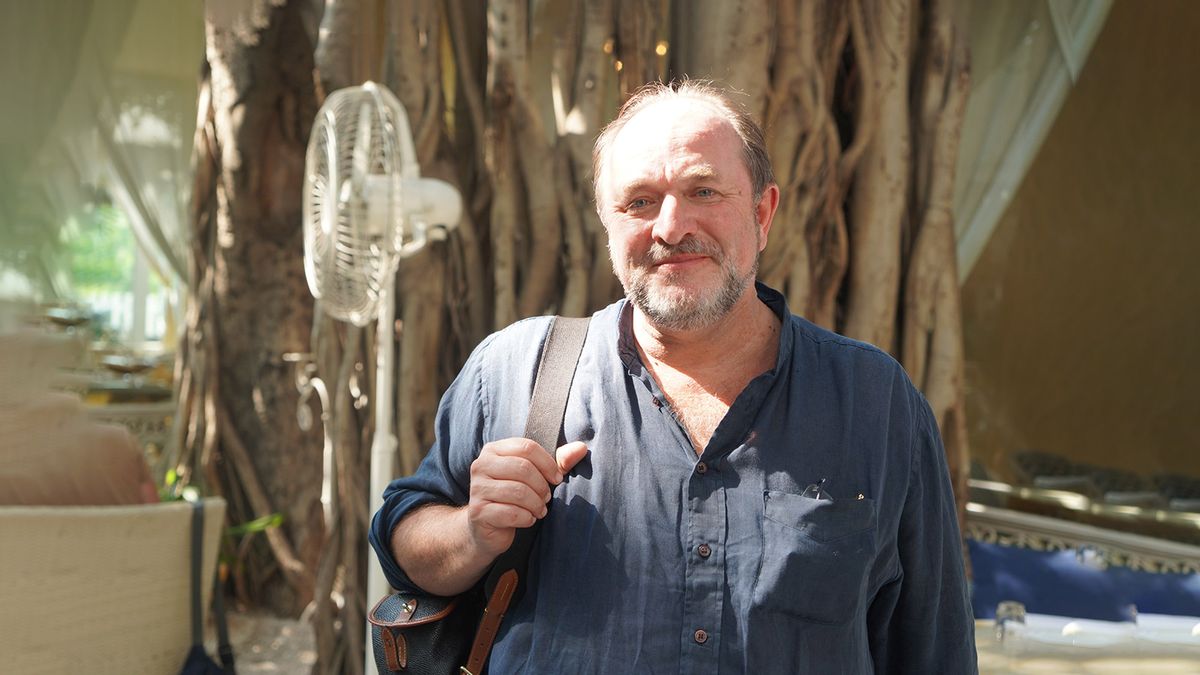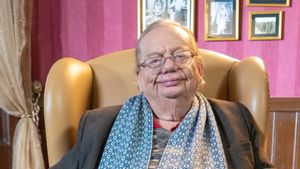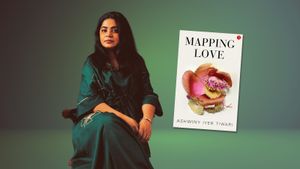Vadehra Art Gallery, Delhi, presents historian and author William Dalrymple’s solo exhibition titled ‘In Search of Ancient India’. The show will be on view till November 3, 2021. The photographs exhibited in this show record the first stage of the travels and research for Dalrymple’s next book, The Golden Road. Born in Scotland in 1965, Dalrymple is known for his travel writings and historical writings on India. He is also the founder and co-director of the Jaipur Literature Festival. The author, photographer, and curator lives and works between India and Scotland.
Edited Excerpts.
1. How did the idea for this exhibition germinate?
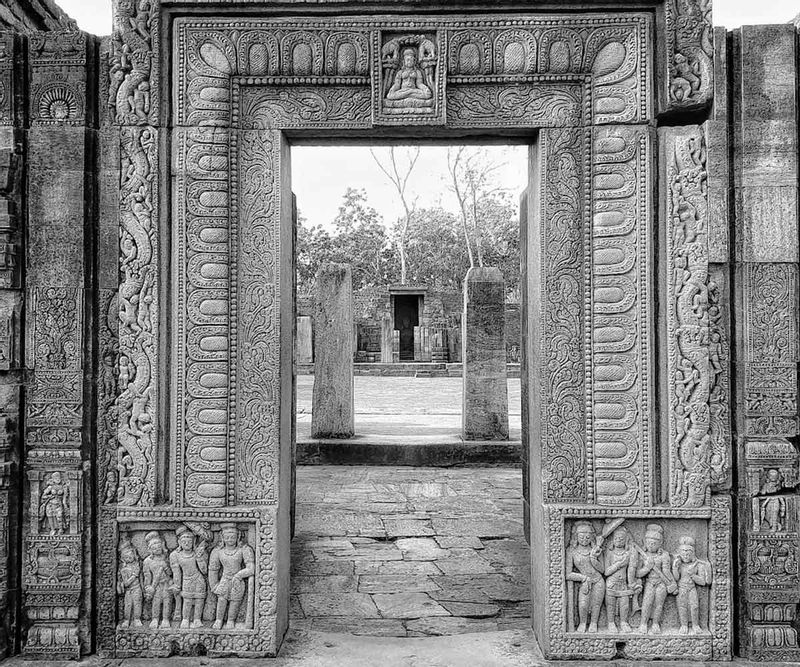
It is actually a byproduct of a new book project, The Golden Road. After completing The Company Quartet, I’m now back to my old love—archaeology. I started out as an archaeologist, before turning into an author. This project allowed me to go back to my first love, which is early Buddhist art. This is something I have been meaning to work on for decades and these photographs are part of that research. I started posting these pictures on Instagram and soon enough the idea of the exhibition developed. You could say, this exhibition is the best of Insta!
2. You were always interested in photography. So did a photographer metamorphose into a writer or vice versa?
My love for photography started as a childhood hobby when my father gifted me a camera at the age of seven. Also, photography goes very well with my work and allows me to see the history that I read about and write about. It’s a very satisfying thing to have a record of your travels. The first thing I do when I arrive at an amazing temple or archaeological site is to photograph it. In a sense, it helps me focus.
3. Tell us more about William Dalrymple, the photographer?
Well, unlike most photographers, I use a smartphone camera. The other trait my photographs have is that they are always black and white. I believe it is a stronger medium than colour. It makes for more powerful and moody images and emphasises signal, patterns, and form.
4. Take us through the work at the exhibition?
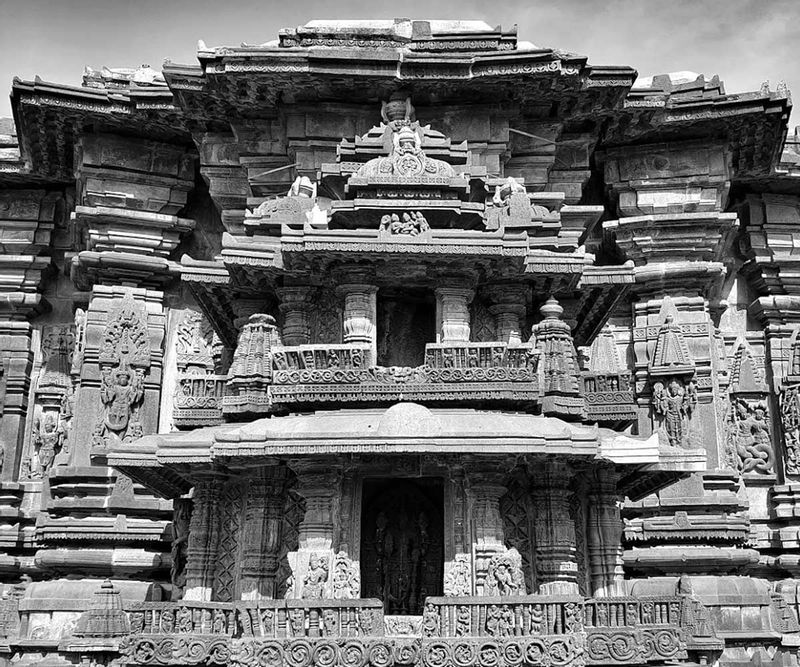
The images encompass the beautiful ancient sites in India—Guptas and Pallavas. There are even images from Gandharva sites in Pakistan as well as Sri Lanka. This exhibition also covers fairly recent travels to Madhya Pradesh, Karnataka, Pallava monuments around Mahabalipuram, Kanchivapuram, Ellora Ajanta, and the Chalukya sites. The photographs exhibited in this show record the first stage of the travels and research for my new project, The Golden Road—which aims to record the artistic and cultural achievements of ancient India and show how their influence diffused in Asia first and then the rest of the world.
5. You say that Western China to the Hindu Kush was largely dominated by Indic ideas, art, science, languages, and religions. Can you elaborate on this?
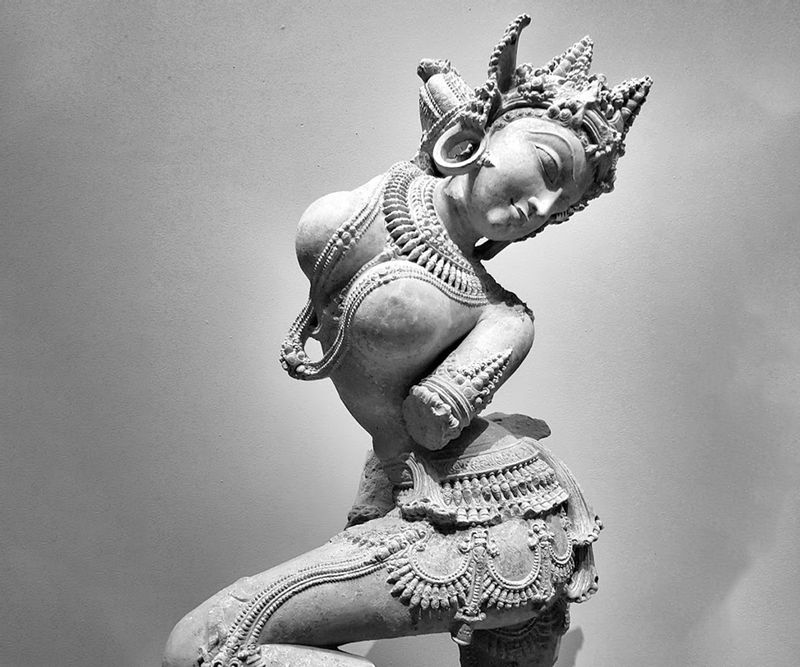
For most of its later medieval and modern history, it was India’s fate to be on the receiving end of cultural influence—and cultural dictation—from other civilisations. But for a full millennium before then, from about 200 BC to 1200 AD, India was a massive and confident exporter of its own civilisation in all its forms. The rest of Asia was the willing and eager recipient of a startlingly comprehensive mass transfer of Indian soft power, in culture, religion, art, music, dance, technology, astronomy, mathematics, medicine, mythology, language, and literature. The influence is still clear from place dotting the map all the way from Kandahar (Gandhara) to Singapore (Singhapura).
6. India was a confident exporter of its own civilisation. How did it become a country on the receiving end of cultural influence from other civilisations?
It is quite simple—there was nothing more to export. It happens with all civilisations, all the time. After you are done influencing other cultures, there comes a time when you take a step back.
7. Of all your travels, which site left a lasting impression?
I was awestruck by Mahabalipuram and the various sites in Madhya Pradesh; also, Ajanta-Ellora. There are two caves in Ajanta that date back almost 800 years. It was fascinating to be allowed to give them a closer look. Now with the renovation work done there, the site has become even more appealing.
8. Will there be more shows?
This exhibition offers the first glimpse into my book. It shows my travels around India, Pakistan, and Sri Lanka. Naturally, there will be future shows which will extend the project around the rest of South-East Asia, covering Indonesia and Cambodia. This exhibition covers the gorgeous Bodhisattvas of Gandhara through the Kushan and Gupta masterpieces of Northern India to the great Chalukya temples of Karnatka, the Pallava sculptures of Tamil Nadu, and the stupas of Sri Lanka. This exhibition, “In Search of Ancient India”, gives a glimpse of one of the world’s greatest civilisations at its most creative and self-confident.
9. What next?
Right now I’m exploring the Musee Guimet in Paris. There are so many works there that correspond to the Sanchi-era Buddhist structures. The Musee Guimet has one of the world’s greatest collections of Buddhist and Hindu art from Cambodia and Vietnam. They also have collections from Central Asia and Afghanistan.
The show can be viewed virtually on vadehraart.com.


